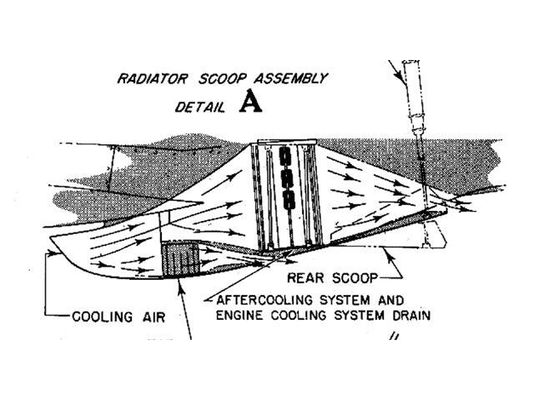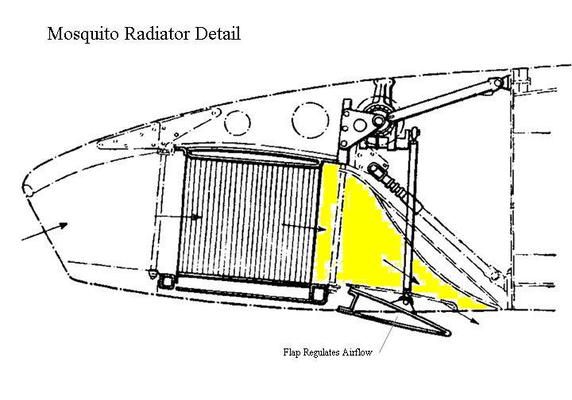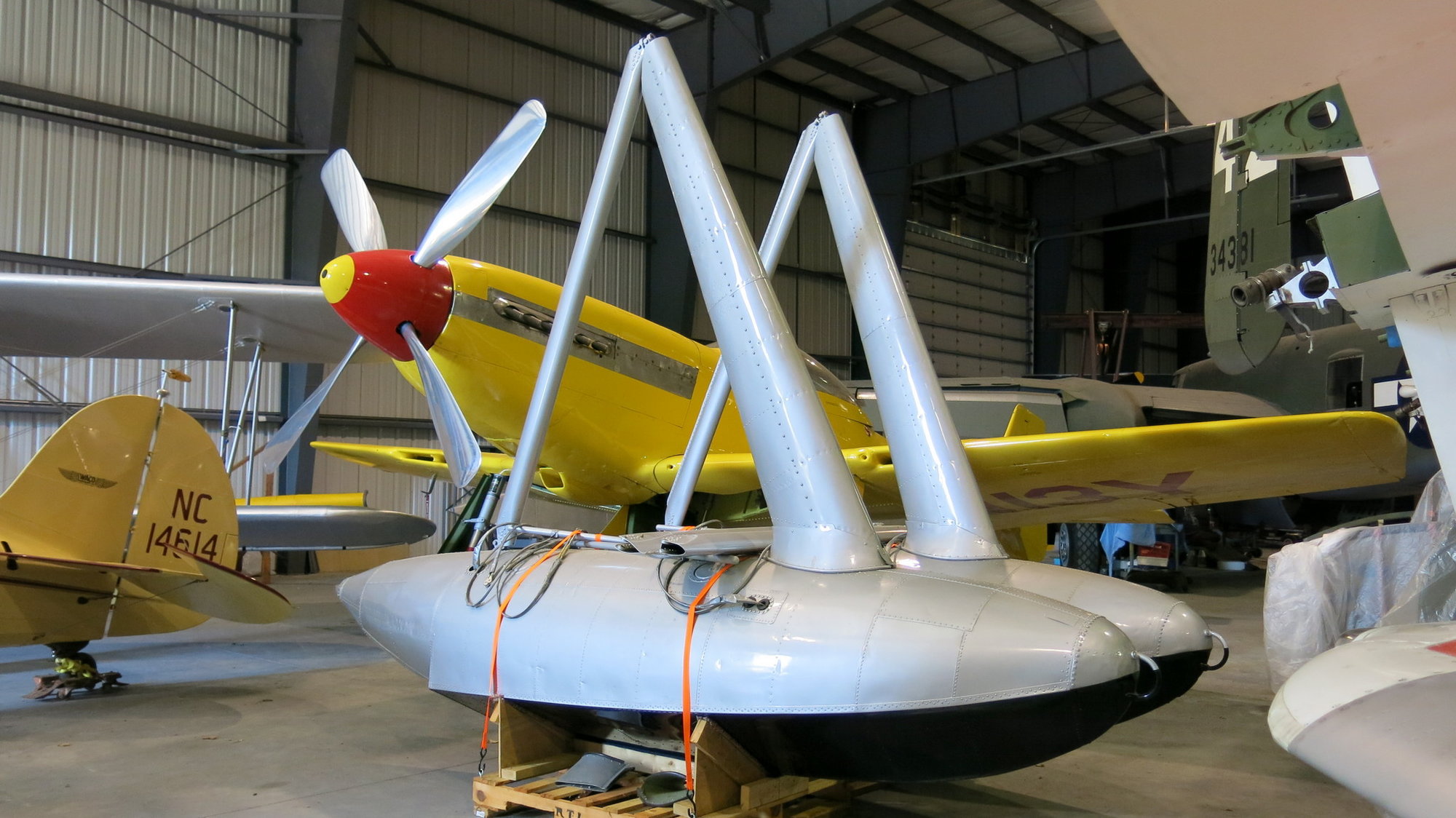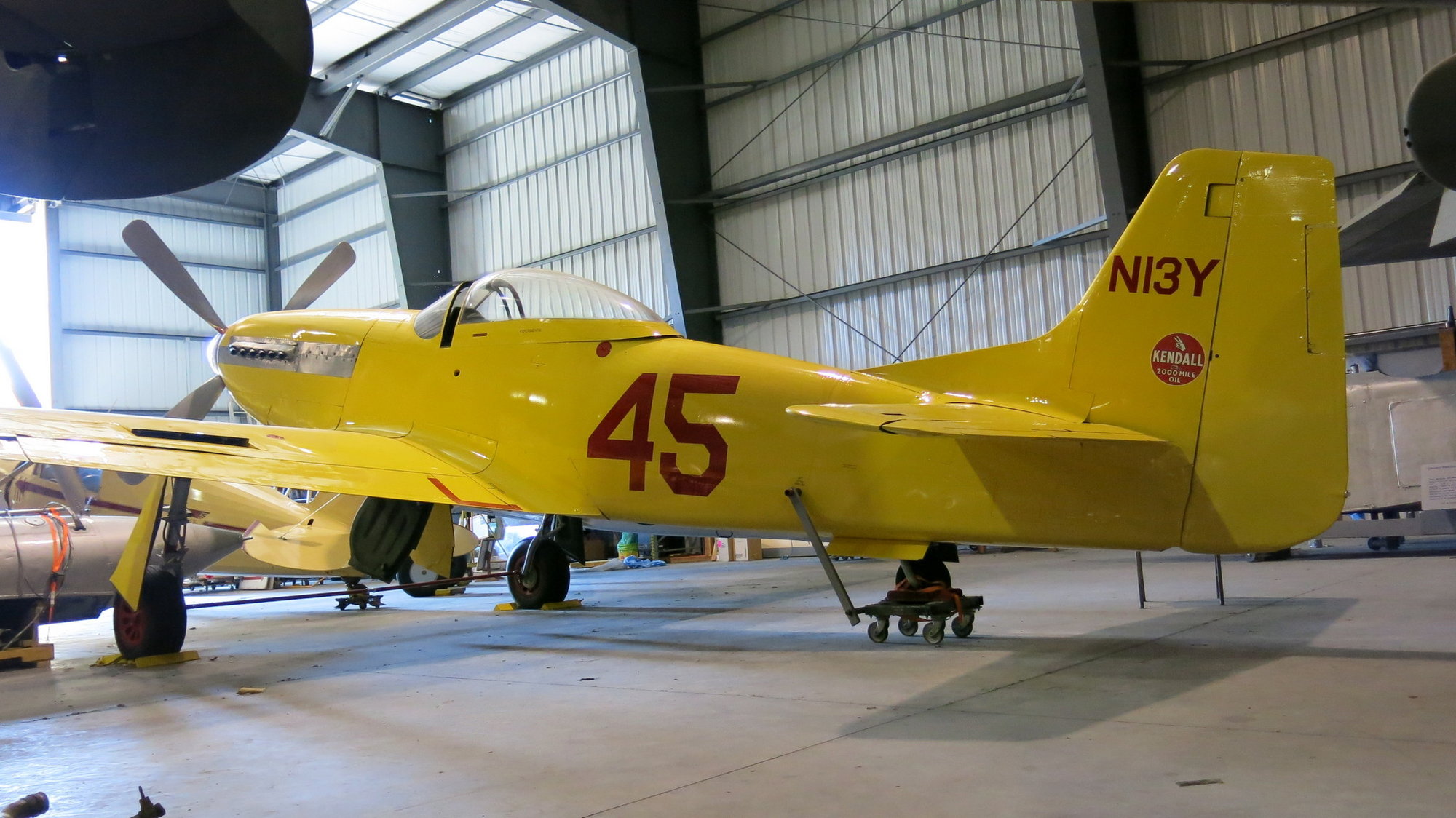Spitfire/Hurricane etc and drop tanks
It was Hooker himself. As a self-confessed - after Hives' initial comment - "not much of an engineer", he assumed that RR were the best.
Packard are very unlikely (I hesitate to say didn't as I don't actually know but I don't see how it could be possible) to have used the Ford drawings as UK and US drawing projections are different. Packard must have also produced their own drawings and although it would seem logical or even obvious for Packard to base theirs on Ford rather than RR - as the hard work had already been done - I've never seen anything anywhere about it either way.
The skewgear failures, IIRC, were caused by one company assembling components in a different order. No problem, all the tolerances were fine and there was apparently no reason why they shouldn't have done, but it didn't work.
I've never read about anything useful Leigh-Mallory did...
Packard are very unlikely (I hesitate to say didn't as I don't actually know but I don't see how it could be possible) to have used the Ford drawings as UK and US drawing projections are different. Packard must have also produced their own drawings and although it would seem logical or even obvious for Packard to base theirs on Ford rather than RR - as the hard work had already been done - I've never seen anything anywhere about it either way.
The skewgear failures, IIRC, were caused by one company assembling components in a different order. No problem, all the tolerances were fine and there was apparently no reason why they shouldn't have done, but it didn't work.
I've never read about anything useful Leigh-Mallory did...
Having been lucky enough to see a spit and P51 side by side a year ago the differences are radical. The Spitfire looks really old against the p51 (although it looks much nicer) and it is much smaller. Designed a good few years apart and for different roles perhaps its not surprising that the p51 as has been pointed out carried twice the fuel of the spit and with nominally similar engines its going to fly at least twice as far.
Spitfires designed for point defence had to claw they way to altitude asap and then get into combat would use lot more fuel than p51 going straight and level at slow speeds for hours on end.
Differences apart it is always wonderful to see and here these iconic aircraft, the elegant 1930 sports car like spitfire and the mighty p51 much bigger-Cadillac of the Sky.
For another interesting comparison of UK and US design practices see if you can get a Tiger Moth and Boeing Stearman on the same ramp and that really does show off the different attitudes
Spitfires designed for point defence had to claw they way to altitude asap and then get into combat would use lot more fuel than p51 going straight and level at slow speeds for hours on end.
Differences apart it is always wonderful to see and here these iconic aircraft, the elegant 1930 sports car like spitfire and the mighty p51 much bigger-Cadillac of the Sky.
For another interesting comparison of UK and US design practices see if you can get a Tiger Moth and Boeing Stearman on the same ramp and that really does show off the different attitudes
Packard are very unlikely (I hesitate to say didn't as I don't actually know but I don't see how it could be possible) to have used the Ford drawings as UK and US drawing projections are different. Packard must have also produced their own drawings and although it would seem logical or even obvious for Packard to base theirs on Ford rather than RR - as the hard work had already been done - I've never seen anything anywhere about it either way
Packard also provided a lot of information to Britain about the metals to use in the big-end plain bearing shells, at the time this was very secret stuff and even now there is a lot of incorrect information about
There was NO material difference between a Hillington engine and a Packard one if you excepted the makers plate
Did you know the majority of US Sherman tanks were powered by Merlins? Well sort of if you stretch things a bit, Ford USA was initially approached to produce Merlins before Henry Ford declined, so it went to Packard. Henry set out to develop his own V-12 aircraft engine using the Merlin cylinder dimensions and configuration, but using automotive practices in certain areas, side by side con rods rather than blade-fork, cast crankshaft etc. For the Sherman tank they removed the middle four cylinders to produce a normally aspirated V-8.
P51 D - 180 USG (wing/main) + 85 USG (rear fuse) + 220 USG (drops) = 485 USG = 404 imp Gallons
Spitfire Mk9 - 96gal (main) +75 gal (rear fuse) + 45gal (drop) = 216 imp gallons
Most of the complaints about the Spitfire's range forget that it was designed as an interceptor and range wasn't important, or even a consideration. All that mattered was to get off the ground as quickly as possible, climb to altitude as quickly as possible, and intercept approaching enemy forces. That was it, nothing else. Range didn't matter.
In a similar vein, people complain about the Lightning's range, or lack of it. In modern parlance, the English Electric P1, P1A and P1B would be "technology demonstrators", and never intended to be production fighters. Thanks to Sandys' idiotic decisions, (to be fair, based on genuinely held beliefs about guided missiles based on personal late WWII experience), it/they had to be turned into a fighter as they'd already flown and they were the only option. Interceptor again was the best that could be expected. "Fuel critical on take-off" I believe was the standing joke on early variants.
In a similar vein, people complain about the Lightning's range, or lack of it. In modern parlance, the English Electric P1, P1A and P1B would be "technology demonstrators", and never intended to be production fighters. Thanks to Sandys' idiotic decisions, (to be fair, based on genuinely held beliefs about guided missiles based on personal late WWII experience), it/they had to be turned into a fighter as they'd already flown and they were the only option. Interceptor again was the best that could be expected. "Fuel critical on take-off" I believe was the standing joke on early variants.
Join Date: Oct 2018
Location: Redhill, Surrey, or another planet
Posts: 28
Likes: 0
Received 0 Likes
on
0 Posts
Building the Merlin in the US was indeed a far more complex and involved affair than most people realise.
Whilst the P51’s radiator arrangement deserves praise, don’t fall for the hype. Having the radiators in the wings ala Mosquito is more efficient, which is why several P51 racers had their radiators moved to their redundant wing gun locations.
Also, increasing the Spitfire’s range was far more complex and involved than just shoving in more or larger fuel tanks. Keeping up with German advances such as the FW190 took up most of the design teams’ time and effort; handling and design weights were an issue, as was the later introduction of the bubble canopy’s reducing fuselage volumes. However, the PR Spitfires were so good that the USAAF used large numbers.
Whilst the P51’s radiator arrangement deserves praise, don’t fall for the hype. Having the radiators in the wings ala Mosquito is more efficient, which is why several P51 racers had their radiators moved to their redundant wing gun locations.
Also, increasing the Spitfire’s range was far more complex and involved than just shoving in more or larger fuel tanks. Keeping up with German advances such as the FW190 took up most of the design teams’ time and effort; handling and design weights were an issue, as was the later introduction of the bubble canopy’s reducing fuselage volumes. However, the PR Spitfires were so good that the USAAF used large numbers.
Whilst the P51’s radiator arrangement deserves praise, don’t fall for the hype. Having the radiators in the wings ala Mosquito is more efficient, which is why several P51 racers had their radiators moved to their redundant wing gun locations
http://airpigz.squarespace.com/blog/...t-reno-in.html
Re the Mosquito being more efficient than the P-51 I would have thought looking at the two that it would not be the case, was the use of the stagnation pressure in front of the airfoil on the Mosquito rather than the parasitic hanging of a scoop on P-51 that more beneficial? Lack of expansion ahead of the Mosquito radiator points to a lack of dwell time to me, greater airflow through the matrix, higher drag, lower exit temperature. Be interested in any direction to technical papers addressing the issue. As with all engineering the designer makes trade offs, but it's interesting why they come to the solutions they do,


Last edited by megan; 24th Jul 2020 at 06:07.
Join Date: Oct 2018
Location: Redhill, Surrey, or another planet
Posts: 28
Likes: 0
Received 0 Likes
on
0 Posts
Iím on my tablet so donít have access to the hordes of technical papers on my PC I used as technical resources for redesigning the cooling system for a highly-modified race/track day car that suffered from charge air and radiator overheating issues. In any case, I think they'd be overkill and we may forget the many other issues involved. For example, the P51 and Mosquito arrangements are more driven by practical considerations; the Mosquito had its engines on the wings and the Mustang, not surprisingly, prioritised itís armament over small cooling gains. Draggy brute-force cooling arrangements of such aircraft as the early Stukas and Sabre-engined Tempests and Typhoons were built as the Ďpower eggí philosophy of a combined engine and cooling unit held sway over technical niceties.
Mustangs such as This one from 1948 are examples. Interestingly, when the powers and speeds of unlimited racers rose shock waves from the wings became more of an issue and the focus was to modifying rather than repositioning the radiator arrangement, although the 2 fastest P51 racers I know of didnít go as far as Gallopiní Ghost by deleting the intake entirely.
interestingly, no other aircraft copied the P51ís design, although that is probably more due to the impending jet age and the widespread use of air-cooled engines in the last piston-engined fighters than any ď if itís so good why did no-one copy itĒ argument.
Mustangs such as This one from 1948 are examples. Interestingly, when the powers and speeds of unlimited racers rose shock waves from the wings became more of an issue and the focus was to modifying rather than repositioning the radiator arrangement, although the 2 fastest P51 racers I know of didnít go as far as Gallopiní Ghost by deleting the intake entirely.
interestingly, no other aircraft copied the P51ís design, although that is probably more due to the impending jet age and the widespread use of air-cooled engines in the last piston-engined fighters than any ď if itís so good why did no-one copy itĒ argument.
Gnome de PPRuNe
Join Date: Jan 2002
Location: Too close to Croydon for comfort
Age: 60
Posts: 12,617
Received 291 Likes
on
159 Posts
Megan, you may recall that one the Cleveland P-51 racers had the rad moved out to the wing tips - was it the ill-fated Beguine? - and another modified by Anson Johnson had the rads in the gun/ammo bays I think - it's now on display at Windsor Locks though not when I visited sadly. As far as I know, Galloping Ghost was the only Reno competitor with the dog house removed.
Major modded P-51s at Reno that I can think of were Red Baron, Stiletto, Dago Red, Strega, Voodoo, Sumthin Else and Precious Metal, all of which retained the belly radiator. Miss Candace/Jeannie did too until modified as Galloping Ghost by Jimmy Leewood.
Major modded P-51s at Reno that I can think of were Red Baron, Stiletto, Dago Red, Strega, Voodoo, Sumthin Else and Precious Metal, all of which retained the belly radiator. Miss Candace/Jeannie did too until modified as Galloping Ghost by Jimmy Leewood.



Join Date: Sep 2018
Location: Melrose
Posts: 50
Likes: 0
Received 0 Likes
on
0 Posts
Merlin drawings
There was never any need to 'redraw' the Merlin drawings. A set of linen copies known as 'brown lines' were probably made from the original R-R tracings and sent to Packard, and these could be easily altered to add to or change any feature of the design. In 1952 when I was working in the drawing office of the North British Locomotive Co during my university vacation I was put on a job which the NBL got when the Indian customer ran out of dollars and had to buy British. This involved taking a set of brown lines sent to us by the Baldwin Loco Works in the USA (the original manufacturer) and altering them to permit British fasteners to be used - the exact opposite of the problem Packard had. We carefully erased all the American data and replaced it with our thread standards . There were other changes, mainly to materials, needed as well. It was a really boring job.
As a mechanical designer all my life, I have to doubt very much the story about the tolerances. Stanley Hooker's book is not the most reliable source. Try Peter Pugh's trilogy 'The Magic of a Name" for a more balanced view of what went on in R-R. In my time (1956-1959) in the Drawing Office at Elton Road, engineering tolerances were dealt with by a dedicated team of specialists.
As a mechanical designer all my life, I have to doubt very much the story about the tolerances. Stanley Hooker's book is not the most reliable source. Try Peter Pugh's trilogy 'The Magic of a Name" for a more balanced view of what went on in R-R. In my time (1956-1959) in the Drawing Office at Elton Road, engineering tolerances were dealt with by a dedicated team of specialists.
Join Date: Jul 2007
Location: Auckland, NZ
Age: 79
Posts: 722
Likes: 0
Received 0 Likes
on
0 Posts
Join Date: Jul 2007
Location: Auckland, NZ
Age: 79
Posts: 722
Likes: 0
Received 0 Likes
on
0 Posts
There is no doubt that the Merlin was redrawn to mass-production standards and it's well-known that prior to that, the engines were assembled by highly skilled fitters.
As the Packard Merlin used BA, BSF and BSW threads, they didn't have a problem changing thread standards as it wasn't done.
As the Packard Merlin used BA, BSF and BSW threads, they didn't have a problem changing thread standards as it wasn't done.
Gnome de PPRuNe
Join Date: Jan 2002
Location: Too close to Croydon for comfort
Age: 60
Posts: 12,617
Received 291 Likes
on
159 Posts
By the way, great pics of N13Y longer ron, you lucky so and so!
Last edited by treadigraph; 24th Jul 2020 at 22:15.
Paul S. Draper
FAA DAR / DER / A&P / IA
Manager / Director of Maintenance
Roush Aviation – Packard V-1650 Merlin FAA Repair Station J23R273Y
Email: //[email protected]
Office: (734) 779-7173
Mobile: (734) 891-4199
here ya go.
these guys put the “propellers in the air”.
the rest of this discussion is not really pertinent, because ALL of the rebuilt engines for these birds come from these guys, and any conjecture from us is significantly lacking in authority.
call em up, they’re very receptive.
FAA DAR / DER / A&P / IA
Manager / Director of Maintenance
Roush Aviation – Packard V-1650 Merlin FAA Repair Station J23R273Y
Email: //[email protected]
Office: (734) 779-7173
Mobile: (734) 891-4199
here ya go.
these guys put the “propellers in the air”.
the rest of this discussion is not really pertinent, because ALL of the rebuilt engines for these birds come from these guys, and any conjecture from us is significantly lacking in authority.
call em up, they’re very receptive.
Right equipment at the right time
Whilst its 'interesting' debating the (pro's and cons ) of equipment design, what is far more important is having it available in sufficient numbers to be of use when required. In WW2 the Germans produced two quite outstanding piston fighters that also had engines to match. This is to be expected from the beligerent side as they had planned their requirements beforehand, and we were to a degree always trying to catch up. Of course what they did not plan for was for the war to go on for so long, and then have to contend with the might of the American production effort. Sydney Camm knew his Hurricane could be improved with a thinner wing, however had they tried to do this rather than produce hundreds of 'adequate' machines for the purpose of shooting down bombers, we would not have had enough fighters to defend the country in 1940,and that would have been the end of it. As it was the Hurricane went on to pioneer many other uses in the ground attack role, whilst the Spitfire was better able to be improved to provide the interceptor role. An attacking force has many advantages, but they are also subject to the 'mistake factor' which in itself can dramatically alter events. We were not immune to making mistakes but made less of them when it mattered. The events of 1940 are all important because had we failed then, the machines that came later would not have happened. It took quite some time for the allies to accept that our bombers would be very vulnerable without fighter escort, yet the Germans had learned this lesson the hard way in 1940. We were also vulnerable in only having one fighter engine which also went on to power our later bomber force, and had the Germans realised the importance of that engine I suspect Derby would have been flattened very early on, indeed SH readily admits he was amazed it wasn't.
I watched a TV show about the Spitfire a while back - the jest of which was that much of the Spitfire was not created in large factories, but rather in small backyard shops and garages - spread all around England and the rest of the UK. This helped keep production going in spite of the persistent bombing.
The US had a similar problem when they started bombing Japan - there were not a lot of big centralized factories but thousands of small shops distributed throughout the populated areas that produced the various war materials (which was used as some of the justification for resorting to area bombing rather than trying to hit specific targets - which it turns out they couldn't hit anyway).
The US had a similar problem when they started bombing Japan - there were not a lot of big centralized factories but thousands of small shops distributed throughout the populated areas that produced the various war materials (which was used as some of the justification for resorting to area bombing rather than trying to hit specific targets - which it turns out they couldn't hit anyway).



